Can you Reheat Lasagne?
How to reheat lasagne and all the facts about it. Lasagne can be one of the most difficult Italian dishes to prepare and one of the most rewarding! With so many layers of meaty, cheesy goodness, you will want to be eating this for days, but how can you reheat lasagne while maintaining the great texture and taste we all love?
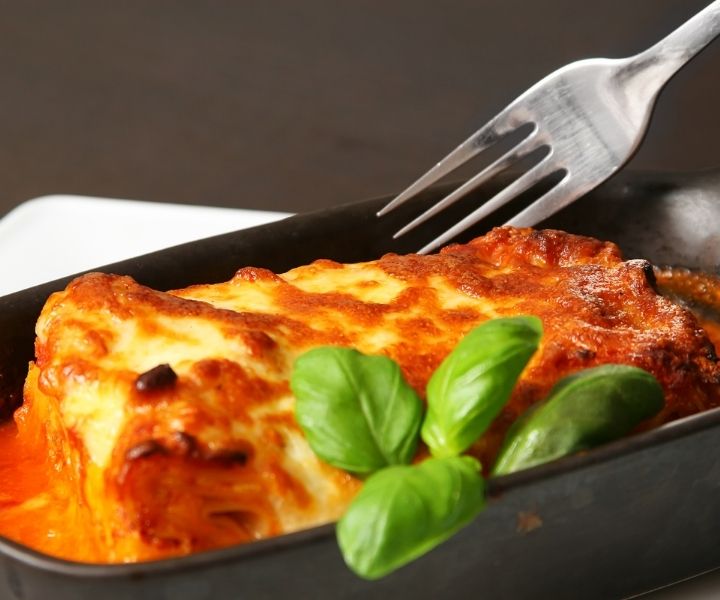
Whether you are using a microwave, skillet, oven, or air fryer is up to you. Still, if you follow this guide on our top tips to reheat lasagne, you will be reliving that amazing cheesy experience from last night’s dinner in no time.
How to Reheat Lasagne in the Oven
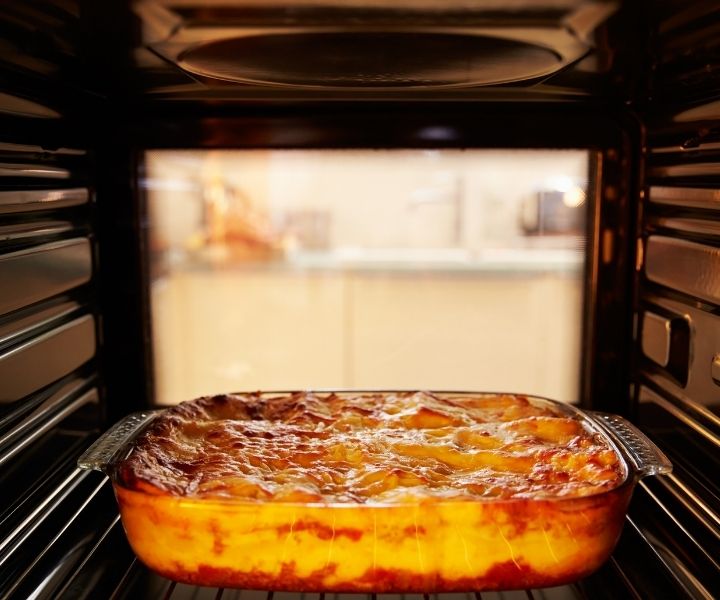
This is probably the most common and easy way to reheat leftover lasagne. If you have stored your lasagne in the tray it was prepared in overnight, you can simply preheat the oven, remove the plastic wrap seal and cook again!
A handy trick is to bring the lasagne to room temperature before cooking and to use medium-low heat to ensure that your lasagne stays moist and delicious. The last thing we want is a dry lasagne!
- Remove lasagne from the fridge and bring it to room temperature.
- Preheat the oven to your medium-low setting (around 375 Fahrenheit or 190 Celcius).
- Place lasagne in an oven-safe dish, or keep it in the container it was initially cooked in.
- Add aluminum foil loosely to the top of the dish, allowing some room for the moisture to escape. Or poke some small holes in the foil with some toothpicks.
- Place in the oven for 15-25 minutes. Feel free to adjust this time if you have a smaller or larger portion of leftover lasagne.
- If you want the cheese on top to become bubbly and crispy, remove the foil for the last five minutes of cooking.
- Remove from oven, allow the lasagne to rest for five minutes before serving.
Reheating Lasagne in the Microwave
This can be an excellent option for reheating an individual portion of lasagne, or if you are craving your lasagne NOW and need it to be ready quickly. Generally, when using a microwave to reheat your lasagne, it will become slightly soggy, but we have a clever trick in the instructions below that will help you avoid getting a dry or crispy lasagne mess.
- Place the individual portion of lasagne in a microwave-safe dish. If you are reheating two pieces, ensure they are not touching each other.
- Stick a toothpick in the center of the lasagne so that it sticks out a few inches.
- Create a tent for your lasagne using a microwave-safe paper towel or plastic wrap, with the highest point at the toothpick in the center and draping the remainder of the material over the lasagne.
- Heat the lasagne on normal-high heat in 90-second increments until it is heated fully. The temperature you want the middle to be is 165 Fahrenheit (73 Celcius). This may take between five and seven minutes to achieve in the microwave.
- If you want the cheese extra crispy, remove the tenting for the last 30 seconds – one minute.
- Remove the toothpick and plastic wrap or paper towel, and enjoy!
The Steps to Reheat Lasagne in a Skillet
Reheating a lasagne in a skillet is definitely not as quick as using a microwave but can be a faster alternative to reheating in the oven with a very similar taste. The best equipment to use is a cast-iron skillet, but you may use any pan in the house.
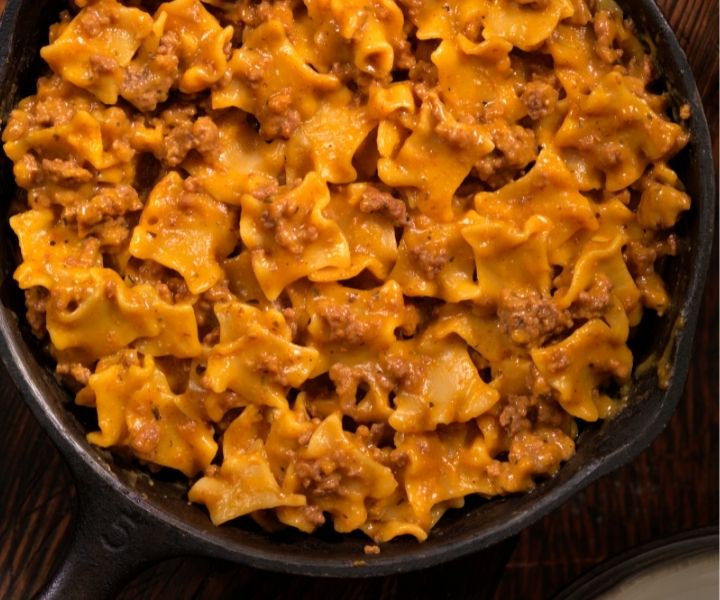
- Place the portions of lasagne in the skillet, ensuring they do not touch each other.
- Add ¼ cup of water to the top of each slice of lasagne to re-hydrate it.
- Heat the skillet to medium-high heat until the added liquid begins to simmer.
- Reduce the heat to medium-low and cover with a lid. This will allow the lasagne to absorb the liquid and remain moist.
- If you want the bottom to be crispy, remove the lid for the last five minutes of cooking.
- Once cooked through, remove from the heat and enjoy!
Can I Reheat Lasagne in my Airfryer and How?
For those of you who love their air fryers and can’t live without them, this method is for you! With very minimal preparation and clean-up, this is a rapid and easy method that will still keep your lasagne moist but with gooey, bubbly cheese on top.
- Preheat your air fryer to 375 degrees Fahrenheit (190 degrees Celcius) for the best results.
- Place the lasagne into a loaf pan to prevent the cheese from melting into the fryer.
- Cover the loaf pan with aluminum foil, sealing all edges to ensure the moisture stays locked into your lasagne.
- Air-fry until the lasagne is entirely cooked through, with an ideal internal temperature of 165 degrees Fahrenheit (73 degrees Celcius).
- If your lasagne needs more time, cook in additional five-minute increments until finished.
- If you want the cheese to be a bit crispy, remove the foil from the top for the last five minutes of cooking.
Does Lasagne Need to be Thawed Before Reheating?
If you are meal prepping for the week, lasagne can be an ideal and tasty meal that will freeze well for later. However, if you plan to eat the lasagne the next day, we recommend removing the lasagne from the freezer and placing it in the fridge to thaw overnight.
Thawing your lasagne will ensure faster cooking time and less chance of uneven temperatures and textures once cooked. The last thing we want is a lasagne that is crispy and dry on the outside but cold in the middle.
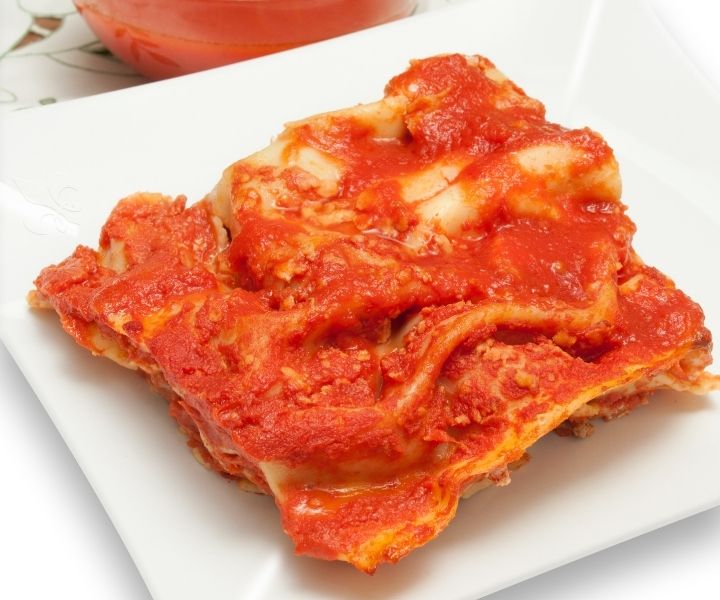
If you forget or simply do not have time to thaw your lasagne, do not panic! If cooking from frozen, it would be recommended to cook in the oven and add on an extra 15-20 minutes of cooking time. Another trick is to add water to the top of the lasagne to rehydrate to prevent it from becoming dry and crispy.
FAQs on Reheating Lasagne
How many times can I reheat lasagne?
Technically you may reheat lasagne as many times as you wish, as long as the internal temperature reaches 165 degrees Fahrenheit (73 degrees Celcius). This is to ensure that all bacteria are killed before eating.
Reheating the lasagne multiple times may cause it to dry out significantly, and it would be recommended to try to reheat only once. To avoid reheating numerous times, you may consider reheating each serving individually so that the remaining leftovers in the fridge stay fresh.
When should I throw uneaten lasagne away?
Leftover lasagne is best eaten within 24 hours of cooking. This is because the taste and texture will be the most similar to when it was cooked at this time. If left for too long in the fridge, the pasta can absorb all of the moisture of the sauce and become very dry when you want to reheat and eat again.
If you are going to reheat two or three-day-old lasagne, consider cooking in the oven with a foil covering and water added to the top for extra moisture absorption.
How long can I store leftover lasagne?
Once cooked, a lasagne will last in your fridge for up to three days before going off. Ensure it is stored in either an airtight container or the tray it was cooked in but with a double layer of plastic wrap or foil on top to keep it fresh.
If keeping for two or three days, it would be recommended to store in an airtight Tupperware container (glass or plastic with sealed edges) to ensure the freshness is sealed and allows less chance of harmful bacteria growing.
Is There a Difference in Reheating Frozen vs. Refrigerated Lasagne?
The main difference between reheating frozen vs. refrigerated lasagne is the cooking time. However, because of added cooking time, the taste and texture can be affected. When cooking from frozen, adding an extra 10-15 minutes to each cooking method would be recommended. This can result in the edges being cooked faster and the middle remaining frozen or cold.
There is also the possibility of the added cooking time extracting all the moisture from the lasagne and making it drier than if it had been thawed in the refrigerator. If you do not have the time to thaw the frozen lasagne, consider adding some water to the top of the lasagne so that it can absorb the moisture while cooking.
Suppose you are going to reheat from frozen. In that case, it may be a better idea to check the middle temperature with a thermometer to ensure it is up to 165 degrees Fahrenheit (73 degrees Celcius), as anything below this can be a breeding ground for harmful bacteria.
Refrigerated lasagne is much easier to reheat and maintains the tasty flavors and cheesy goodness. However, for even better results, especially when cooking in the oven, bring the lasagne to room temperature before reheating.
The Best Ways to Store Cooked Lasagne
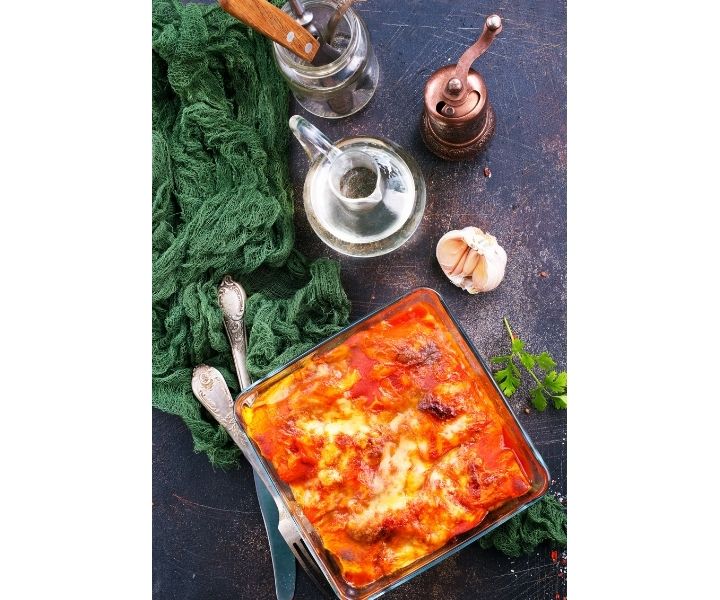
How you store your lasagne is very important if you want to eat the leftovers over the next few days. You must store the leftovers in an airtight or sealed container to keep the lasagne fresh, keep the bacteria away and keep all of that moisture from the sauce intact.
If you are going to be eating the lasagne the next day, you can store it in the tray it was cooked in for convenience, ensuring that you create an effective seal by double wrapping the top of the tray with either plastic or aluminum foil.
Ensure that you are reheating in the oven to remove the plastic foil before cooking, and if you are reheating in the microwave, remove the aluminum foil before reheating.
If you want to keep the lasagne for longer than 24 hours, it may be a good idea to place it in a Tupperware container (either glass or plastic) with a sealed lid. This will help to keep it fresher for longer periods.
Depending on your personal preference, you may prefer to eat your leftovers cold. You can definitely eat leftover lasagne while it is cold. Still, it should be within the first 24 hours of cooking, as eating cold leftovers can cause you to ingest harmful bacterias that would be killed during the reheating process.
Parting Words
Whether you are meal prepping for the week, have too many leftovers from last night’s dinner party, or just simply wanting second helpings of that delicious cheesy lasagne from last night, follow this guide to get the best out of your leftovers.
You can play around with each of the methods of reheating lasagne until you find the perfect match for your lifestyle, kitchen appliances, and skill set. But remember the most important rule of cooking lasagne, keep it cheesy!

Community of passionate writers and content creators who share a love for Italian heritage, culture, travel, food, and the Italian-American community. Our mission is to celebrate Italy’s rich history and traditions and connect with others who share the same passion.

